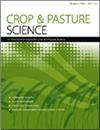印度数字农业何去何从?
IF 1.9
4区 农林科学
Q2 AGRICULTURE, MULTIDISCIPLINARY
引用次数: 1
摘要
摘要农业是印度经济的核心,普遍存在运营效率低下的问题,可以通过使用数字农业技术来纠正。我们回顾并综合了有关印度数字农业的现有文献,并预测了其在未来十年的变革潜力。尽管DA的最初增长在下游部门和高价值作物中更为明显,但尽管存在大量障碍,如持有量小、数据基础设施和公共政策不足以及数字基础设施获取不平等,但向上游小农户的普及仍在缓慢出现。农业技术使价值链中的许多地方都能实现创新,从单个农场到整个价值链的变化正在稳步转变。该行业的技术正在从基于信息和通信技术的解决方案发展到物联网和人工智能——机器学习服务。印度的公共政策显示出在该行业进行长期投资和合作的迹象,明确关注数据基础设施的发展。我们发现,小农优势、生产系统的多样性、商品作物的优势、靠近城市市场以及公共政策是DA在印度取得成功的主要因素。印度公共部门、科技巨头、信息技术领导者和农业食品科技初创公司对现有技术及其应用的总结有力地表明了印度农业的数字化转型。然而,鉴于联邦治理结构和农业是州(省)的主体,我们需要等待DA政策如何在全国推广和实施。本文章由计算机程序翻译,如有差异,请以英文原文为准。
Whither digital agriculture in India?
ABSTRACT Agriculture is central to the Indian economy and suffers from widespread operational inefficiencies that could be corrected by the use of digital agriculture technologies (DA). We review and synthesise available literature concerning digital agriculture in India and anticipate its transformative potential in the coming decade. Although the initial growth of DA was more conspicuous in the downstream sectors and high-value crops, reaching smallholder farmers upstream is slowly emerging despite significant obstacles such as small fragmented holdings, inadequate data infrastructure and public policy, and unequal access to digital infrastructure. Agri-tech enables innovation at many locations within value chains, and a steady shift is occurring in change from individual farms to the whole value chain. Technology in the sector is progressing from information and communication technology-based solutions to Internet of Things and artificial intelligence–machine learning-enabled services. India’s public policy shows signs of a longstanding investment and collaboration in the sector, with an explicit focus on data infrastructure development. We find smallholder predominance, diversity in production systems, the predominance of commodity crops, proximity to urban markets, and public policy as the major factors of DA’s success in India. A stocktake of the available technologies and their applications by the public sector, tech giants, information technology leaders and agri-food tech startups in India strongly indicates a digital transformation of Indian agriculture. However, given the federal structure of governance and agriculture being a state (province) subject, we need to wait to see how DA policies are rolled out and taken up across the country.
求助全文
通过发布文献求助,成功后即可免费获取论文全文。
去求助
来源期刊

Crop & Pasture Science
AGRICULTURE, MULTIDISCIPLINARY-
CiteScore
4.20
自引率
15.80%
发文量
111
审稿时长
3 months
期刊介绍:
Crop and Pasture Science (formerly known as Australian Journal of Agricultural Research) is an international journal publishing outcomes of strategic research in crop and pasture sciences and the sustainability of farming systems. The primary focus is broad-scale cereals, grain legumes, oilseeds and pastures. Articles are encouraged that advance understanding in plant-based agricultural systems through the use of well-defined and original aims designed to test a hypothesis, innovative and rigorous experimental design, and strong interpretation. The journal embraces experimental approaches from molecular level to whole systems, and the research must present novel findings and progress the science of agriculture.
Crop and Pasture Science is read by agricultural scientists and plant biologists, industry, administrators, policy-makers, and others with an interest in the challenges and opportunities facing world agricultural production.
Crop and Pasture Science is published with the endorsement of the Commonwealth Scientific and Industrial Research Organisation (CSIRO) and the Australian Academy of Science.
 求助内容:
求助内容: 应助结果提醒方式:
应助结果提醒方式:


